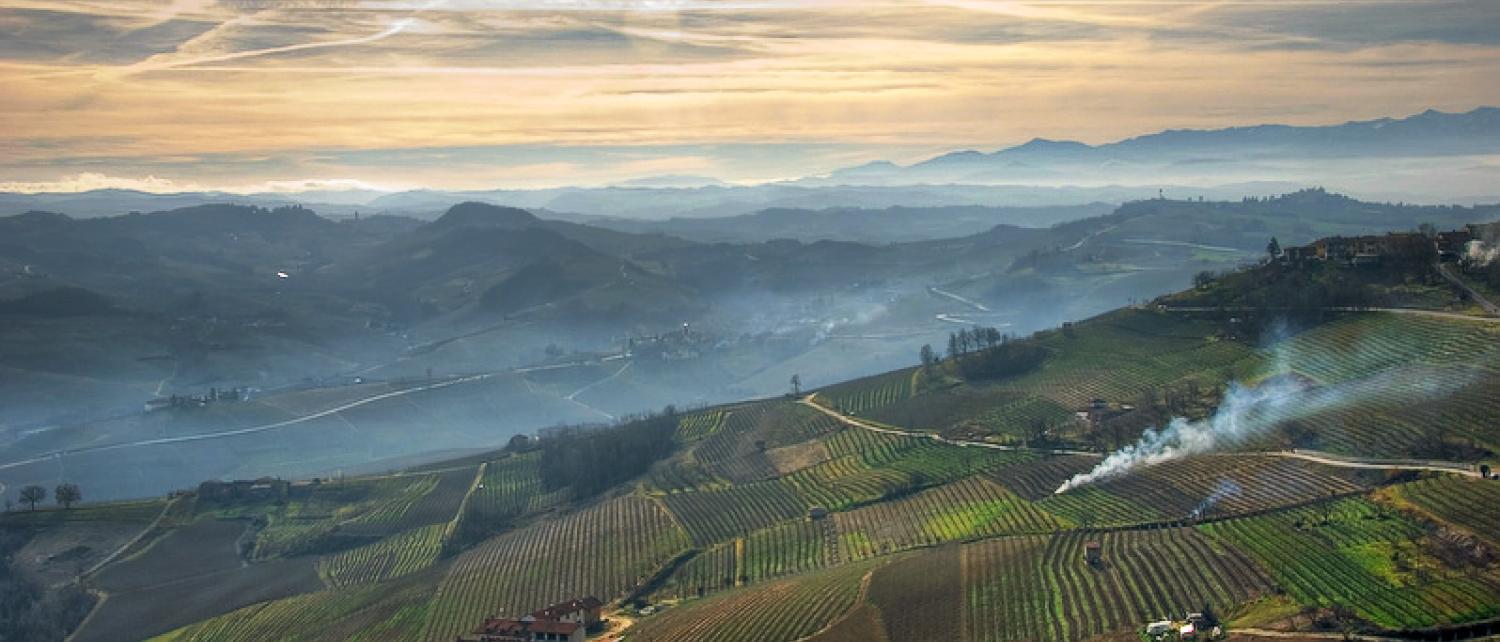Passion
•
The Roncaglia is born of love for our land and its sunny vineyards. Our passion is to work with dedication to create great wines, that comply with the magnificence of the territory where they were born.
In the heart of the Langhe, a UNESCO heritage site for its unique landscapes and incredible wine productions, in the hamlet of Santa Maria de La Morra, in the province of Cuneo, is located the farm La Roncaglia, strong of a century-old family tradition.

•
The Roncaglia is born of love for our land and its sunny vineyards. Our passion is to work with dedication to create great wines, that comply with the magnificence of the territory where they were born.
•
We wanted to preserve our family tradition, renewing it with a deep change, but always in line with our original values.
•
We strongly believe that wine is an authentic expression of the territory from which it came. We love and respect our lands and the people who have trod them before us; to them and to the land we owe the excellence of our wines.
For Langhe people making wine is something that runs in the blood, such as going to sea for the Mediterranean peoples. And so we decided to sail in the lucid madness of this project, we, who come from completely different backgrounds, but we have never forgotten our roots.
Barbera and Barolo, the wine of the “Piòle” and the wine of kings. Wine oxymoron. These are our products that we carry out with the passion of professionals become winemakers (we are not the first and will not be the last either), trying to add to our wines, in addition to the knowledge of world-class wine experts, a bit of our other experiences, to make a product more suited to the contemporary world.
Are we winemakers? Well, yes we are.
“If we do not honor our past, we lose our future. If we destroy our roots, we cannot grow”
Friedensreich Hundertwasser
The farm La Roncaglia reborn in 2013 thanks to the commitment, passion and the ability to dream of the grandchildren of the founder Luigi Roggero, in La Morra, in the middle of the production area of Barolo and Great Wines of Langa. Two generations later, Alberto, Antonella, Cesare and Luigi decided to jump into this strenuous but exciting adventure of becoming wine-makers, starting a profound renewal. This came true primarily innovating and taking advantage of top class partnerships.
The farm takes its name from the area that houses the eponymous Cascina Roncaglia Sottana (276 meters s.l.m.) that the Roggero family, has since the beginning of the last century. It is believed that the Roncaglia was originally a farmhouse owned by the noble family Falletto, later acquired by the bishop of Alba. The real estate registry office actually reports in 1585, among the goods declared by Francesco Marco Falletto, a “cassina” (ancient term for the current “Cascina”) in the Roncaglia area. The total area is about 9 hectares and mainly houses vineyards and hazelnut trees. The vineyard area is about 3.5 hectares of which 2.6 planted with Nebbiolo particularly suited for the production of Barolo DOCG, the rest with Barbera for Barbera d'Alba DOC, facing south / south-east. The vineyard area is about 3.5 hectares of which 2.6 planted with Nebbiolo particularly suited for the production of Barolo DOCG, the rest with Barbera for Barbera d'Alba DOC, facing south / south-east.
Until the mid-70s, the Roggero family has directly managed the farm, dealing with all the growing and production process, operating in sharecropping arrangements, with a family of farmers, with which it has established a strong trust and lasting relationship, so that the descendants of this family still occupy, in part, the premises of the farm.
Later, after the passing of the founder Luigi Roggero, and the overcoming of sharecropping contracts, the land was leased to other farmers from Langhe, close to the family values. In this period, the contract management and the basic orientation of the Company's strategy, were insured by the constant and passionate presence of the founder’s daughter, Lidia, Silvana and, in particular, Margherita, who have enabled us to maintain the quality of crops and vineyards to levels of excellence.
With the end of the last lease, in 2013, the grandchildren have moved to take back the direct management of the company, and have initiated a profound renewal. In 2014, they proceeded uprooting and replanting of 90% of the Nebbiolo vineyards, with a deep "maintenance" of the vineyards of Barbera and the recovery and expansion of hazelnut cultivation.
The theoretical production of grapes is around 19,000 kg of Nebbiolo and 10.000 kg of Barbera, which in terms of producible bottles, are equivalent to approximately 18,000 bottles of Barolo and 9,000 of Barbera d'Alba.
This theoretically, since the production policy is geared to the attainment of the highest levels of quality. Repeated sessions of thinning in the vineyard and selection of grapes during the harvest are practiced, in order to reduce the yields, with the benefit of higher quality levels.
In 2016, in addition to Barbera and Barolo crus of Capalot, we had the first Nebbiolo grapes harvest, produced from new vineyards, which has been vinified in Barolo, available starting from 2020 springtime. In the same year, a small production of white wine has been launched, based on the Viognier vine variety.